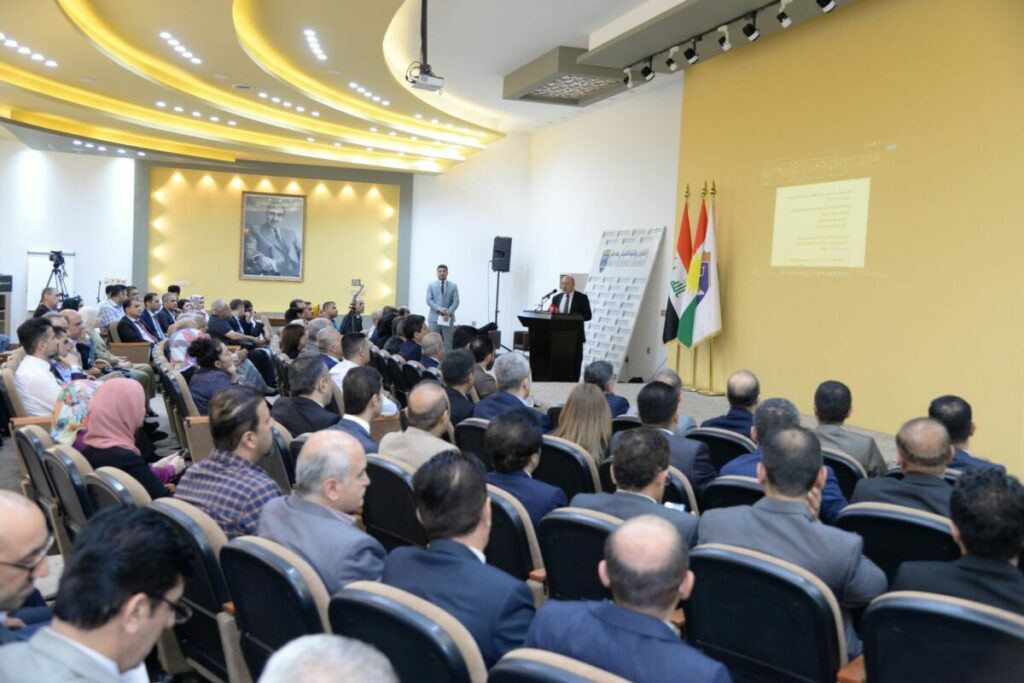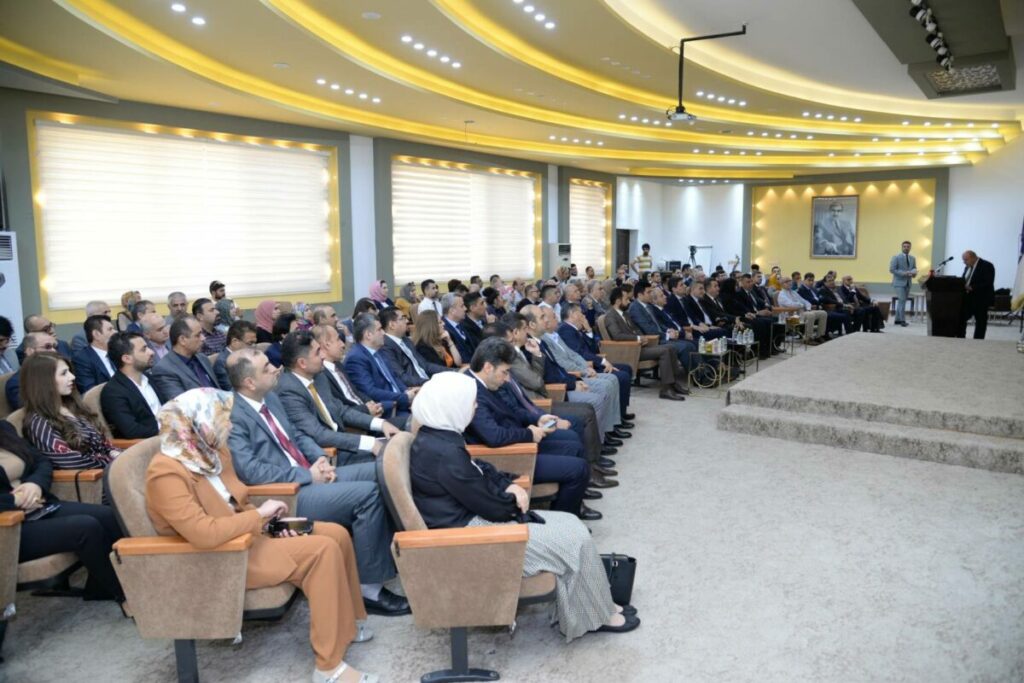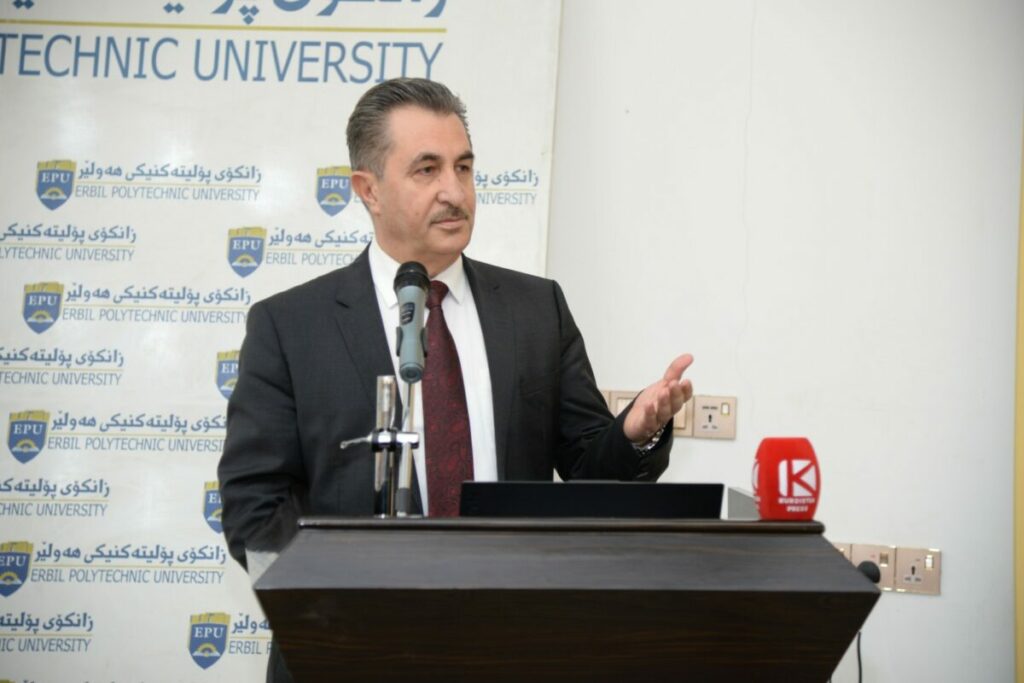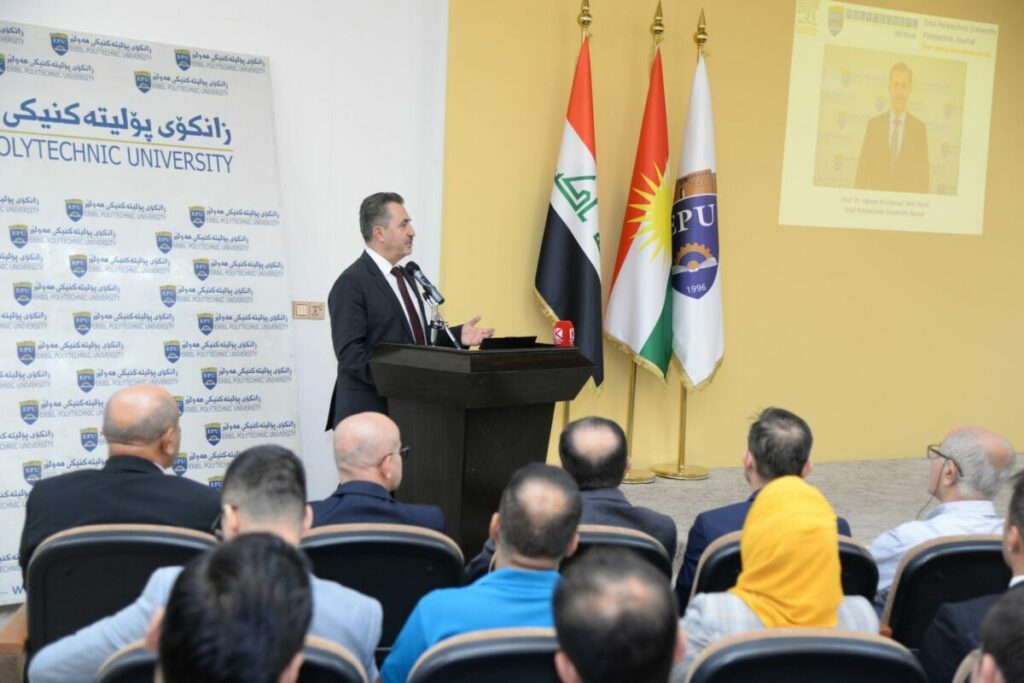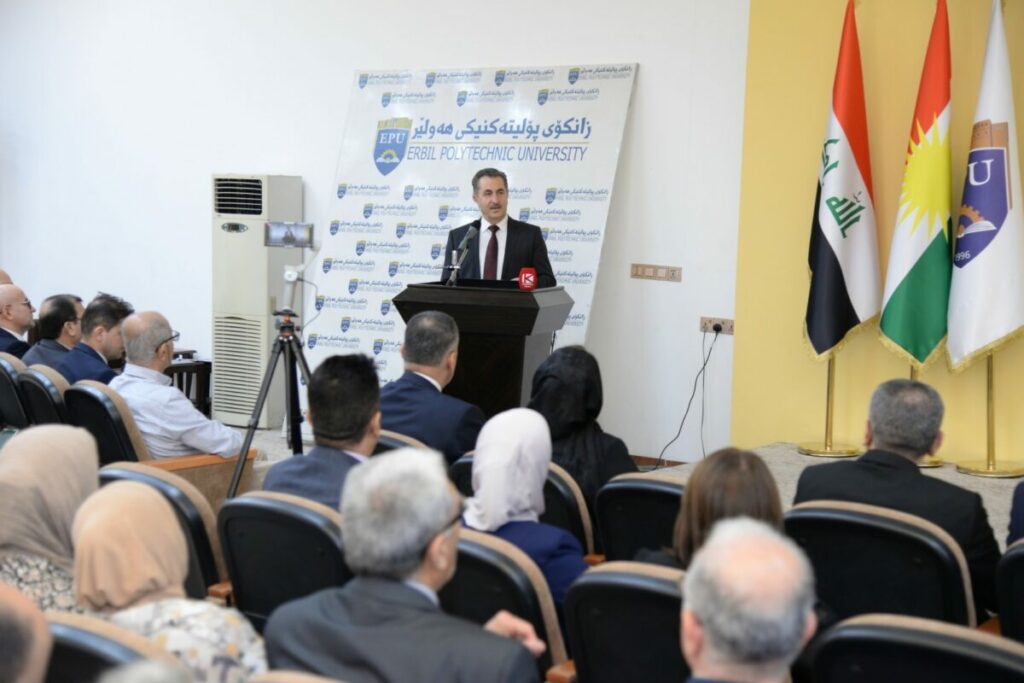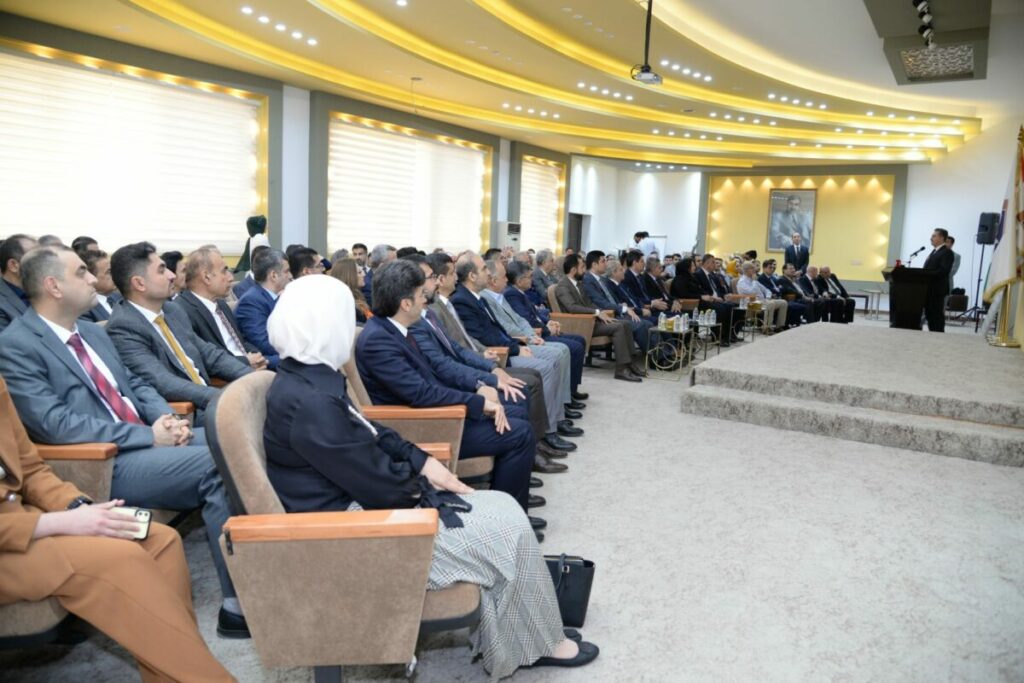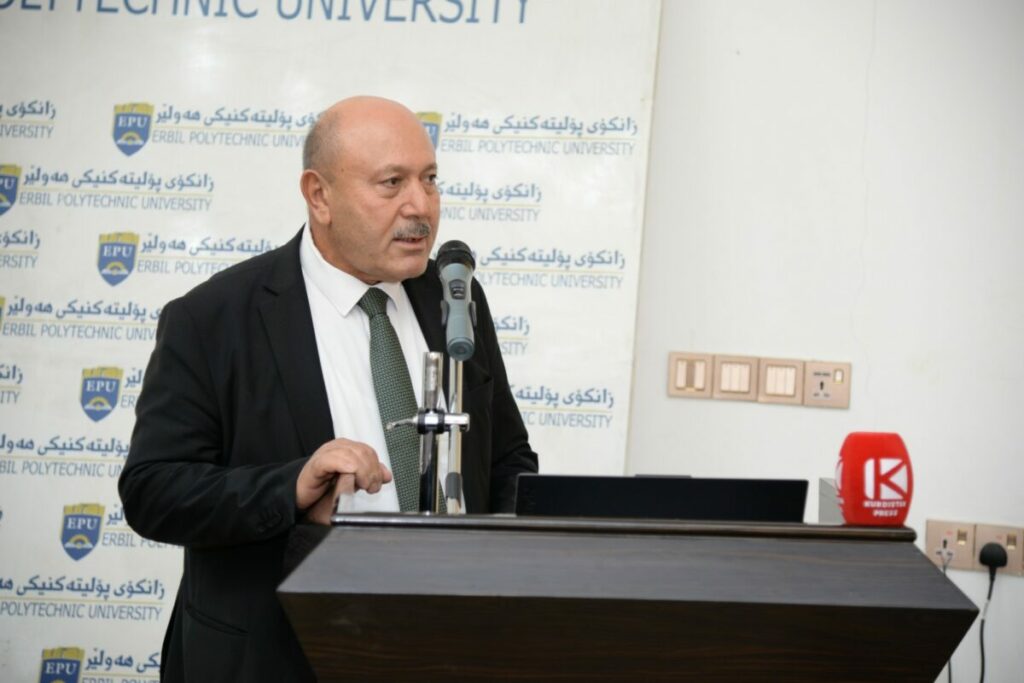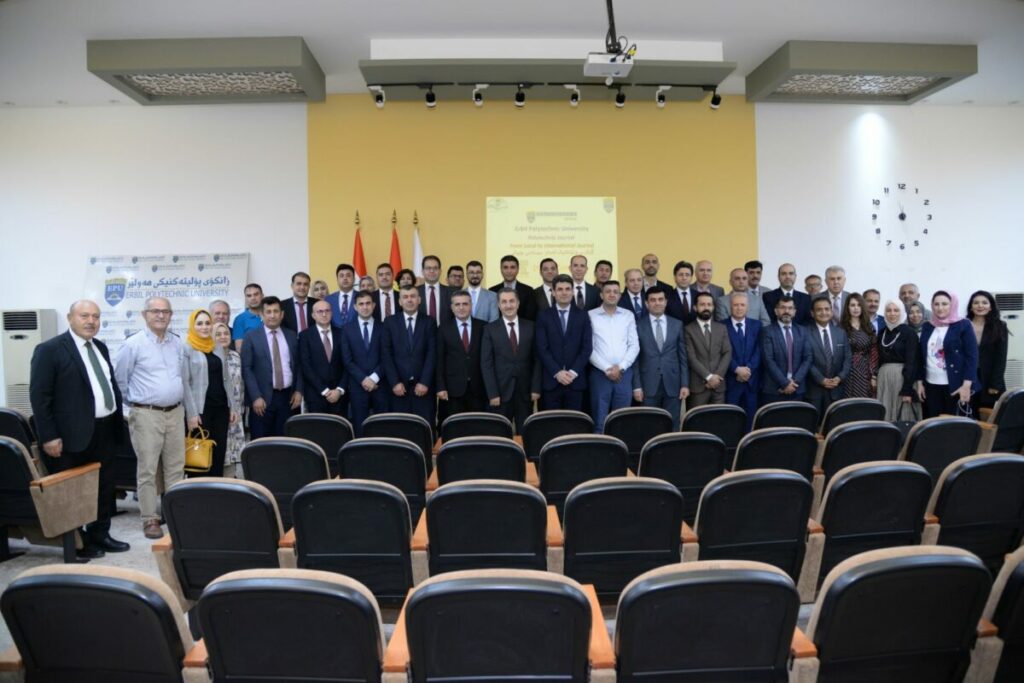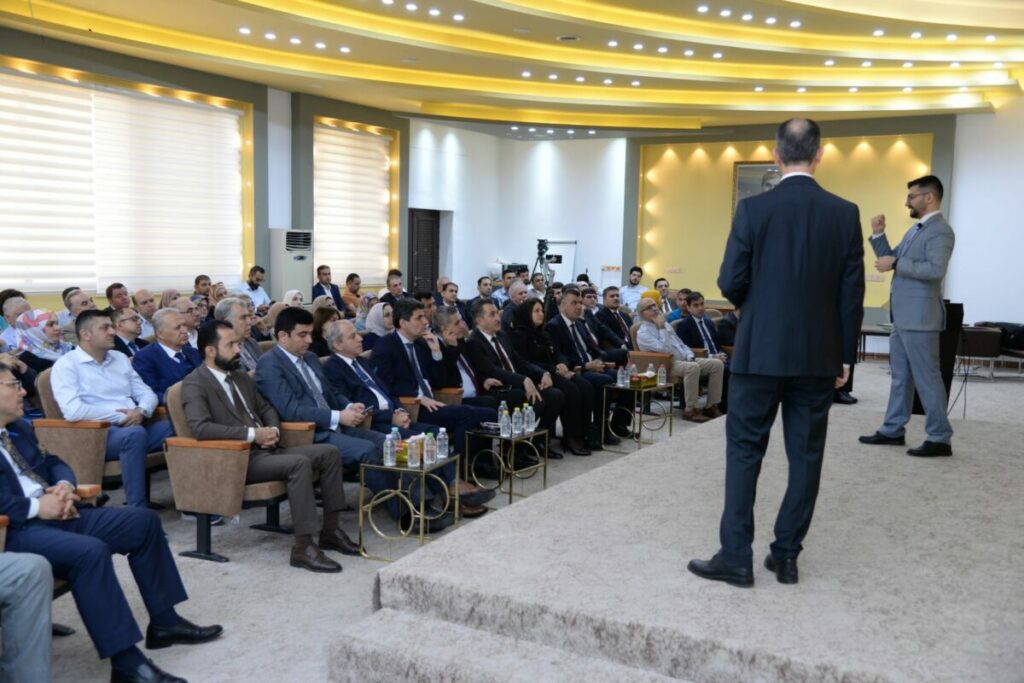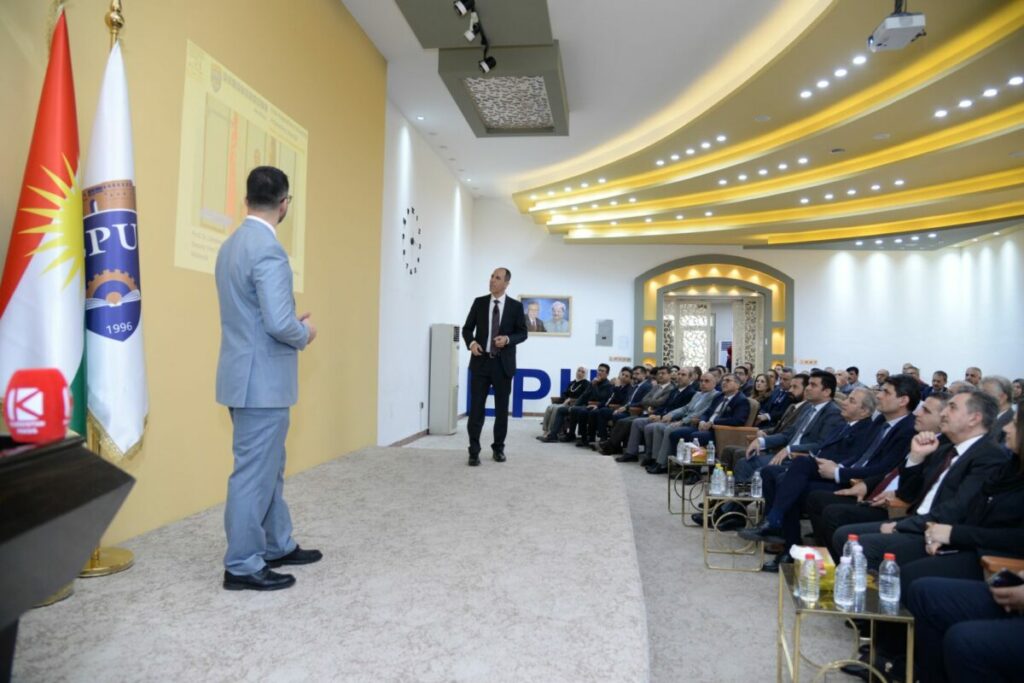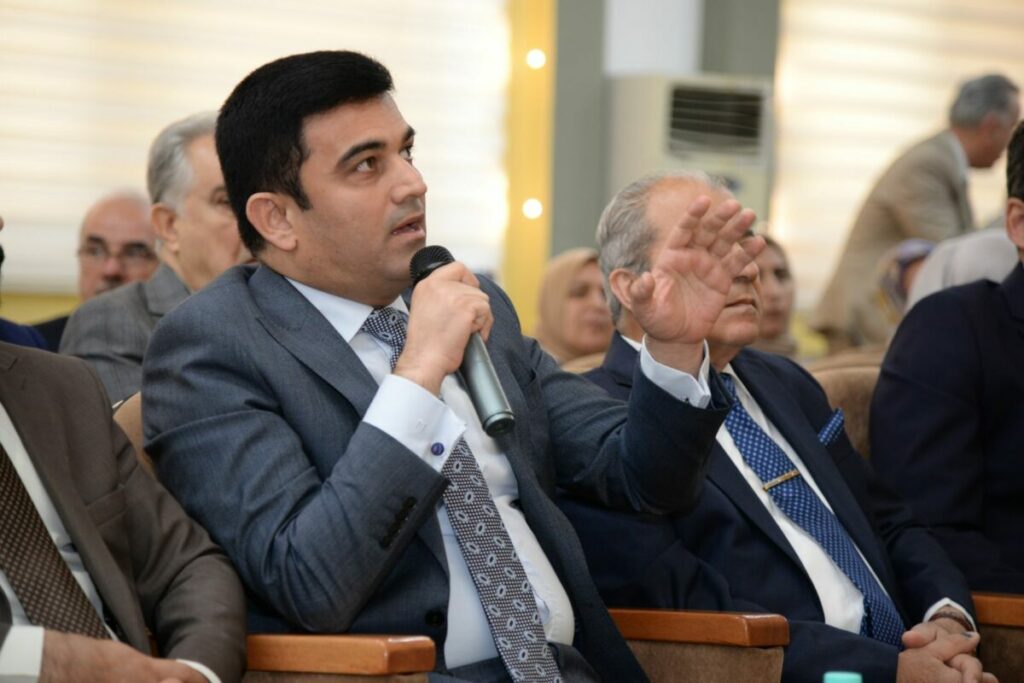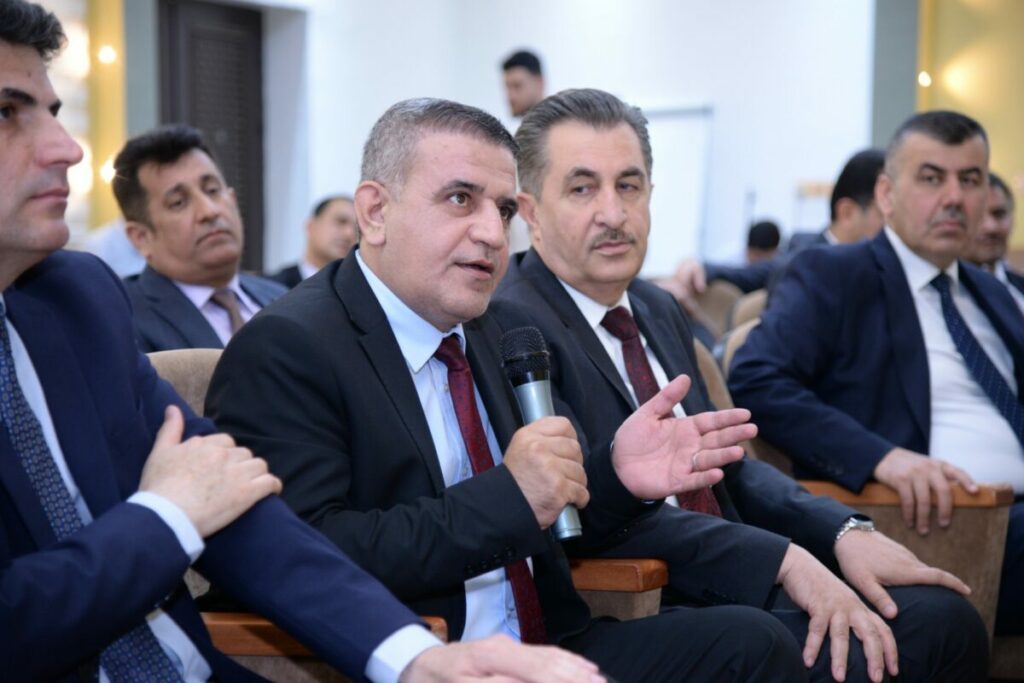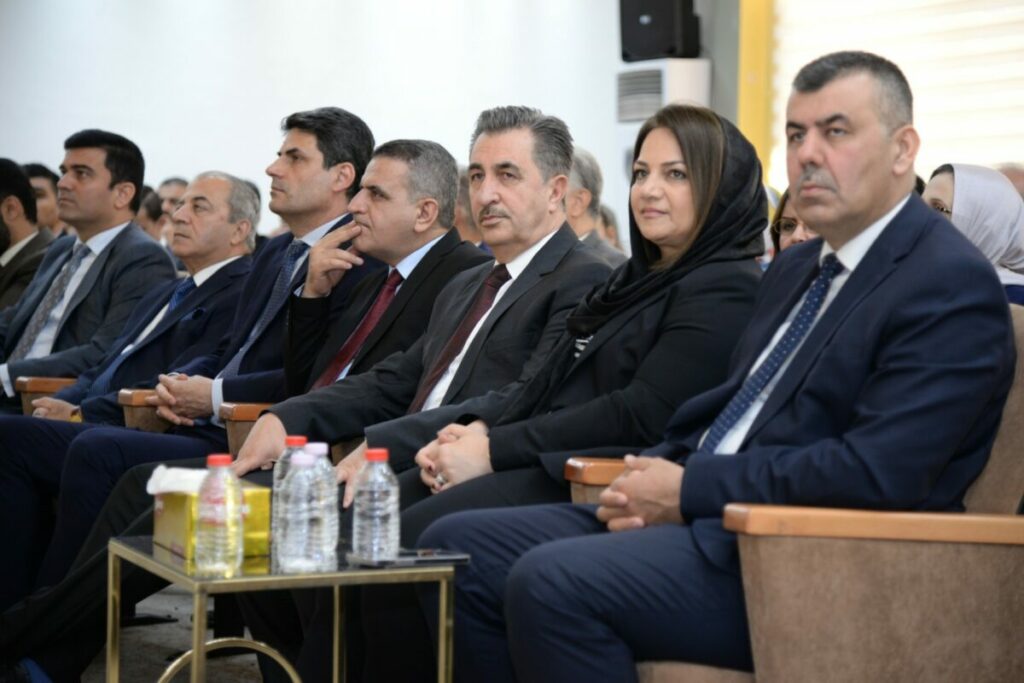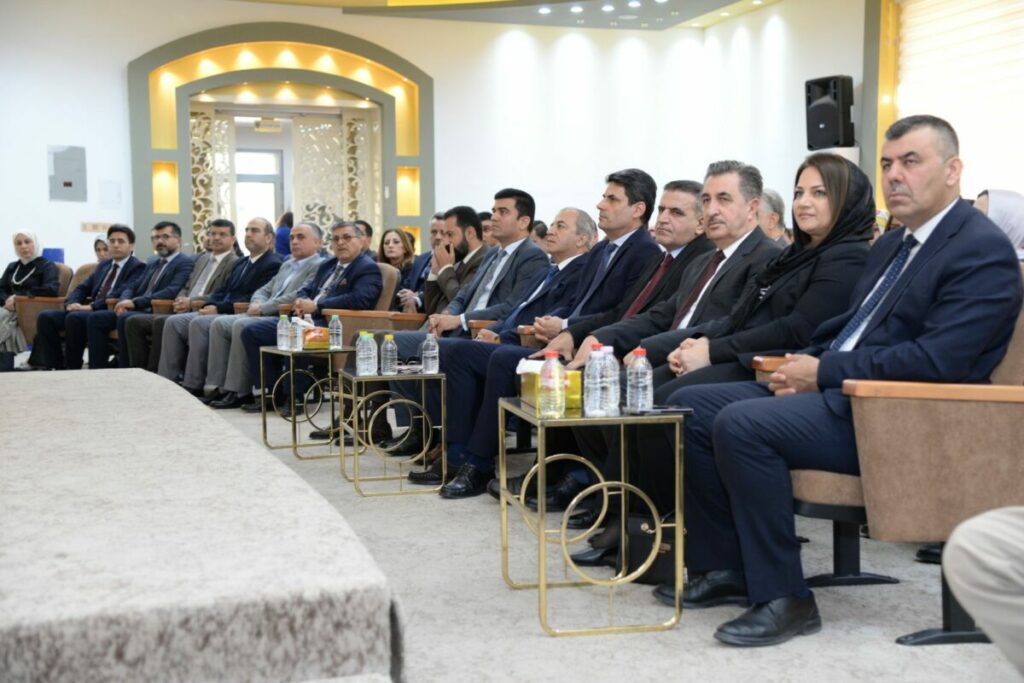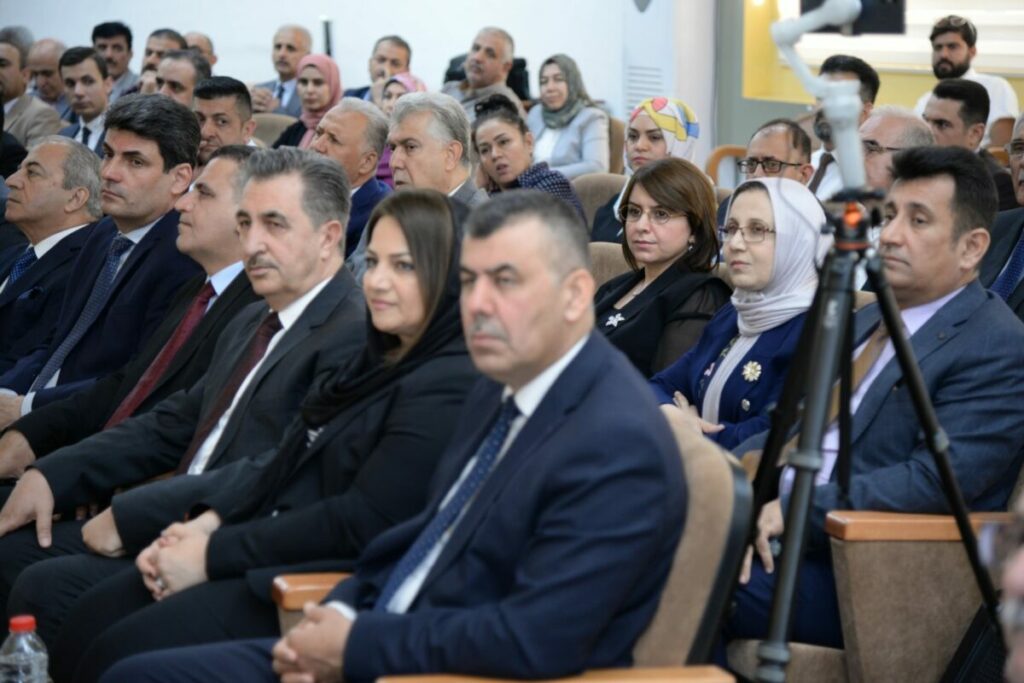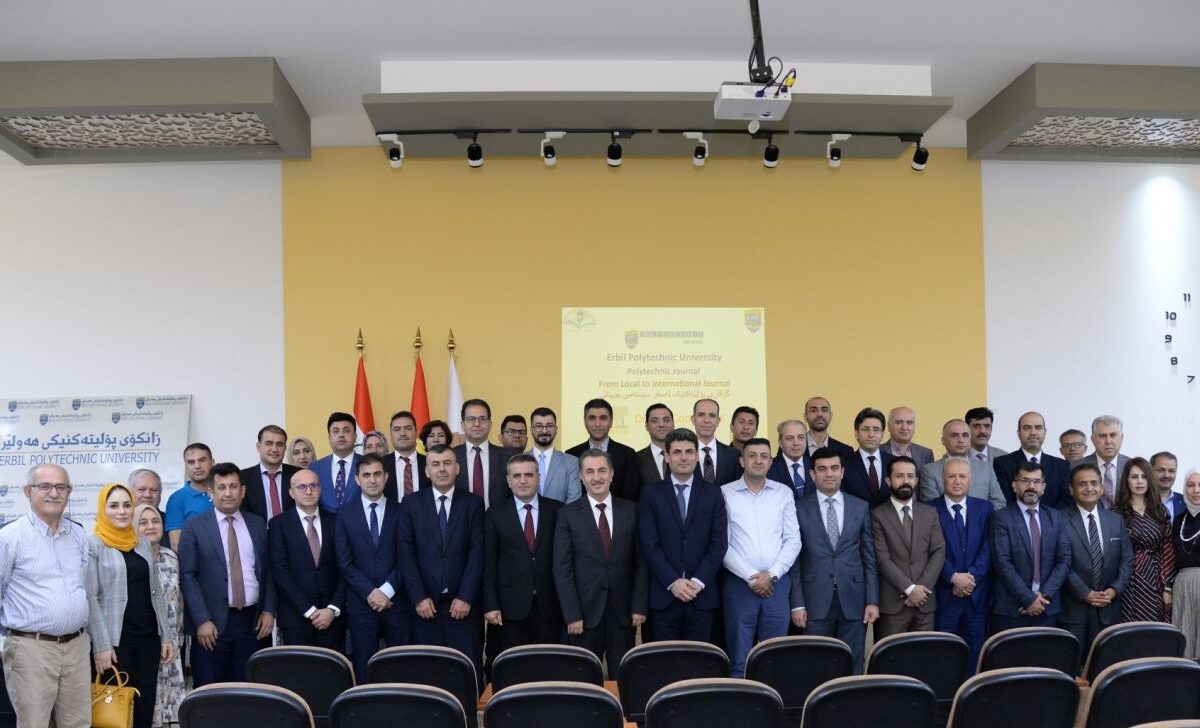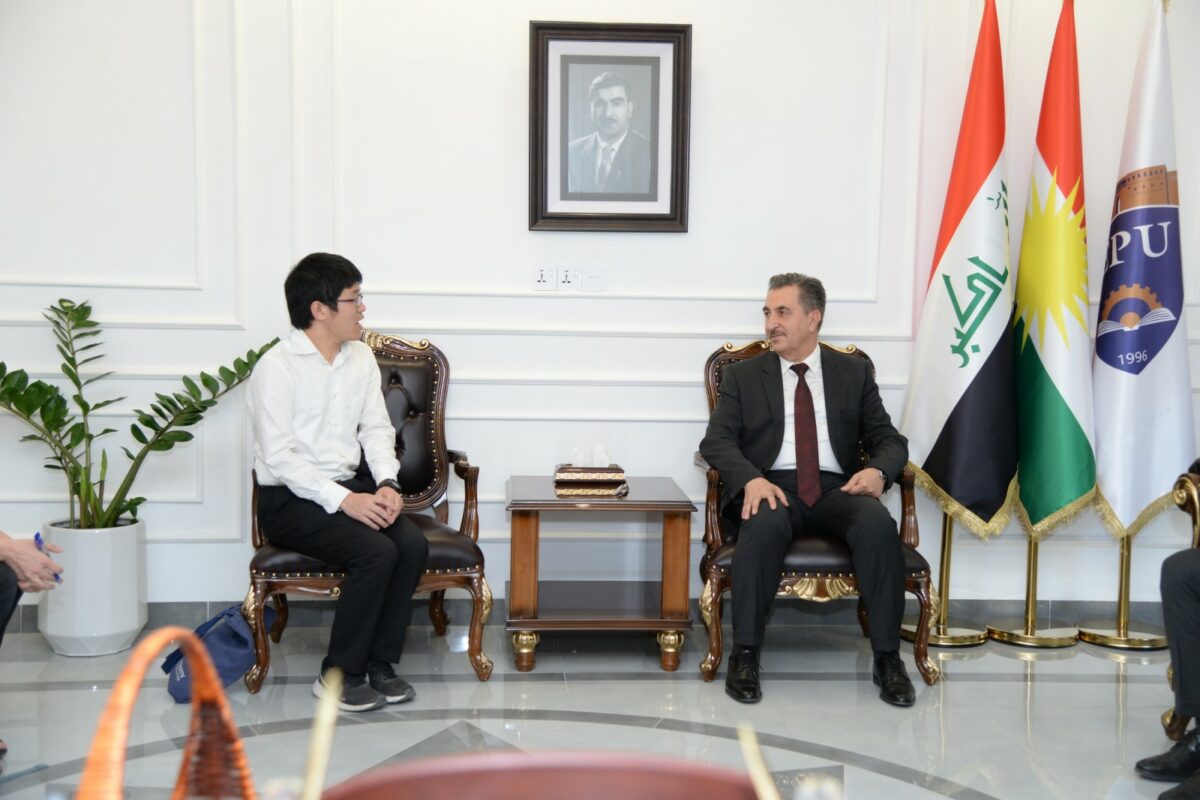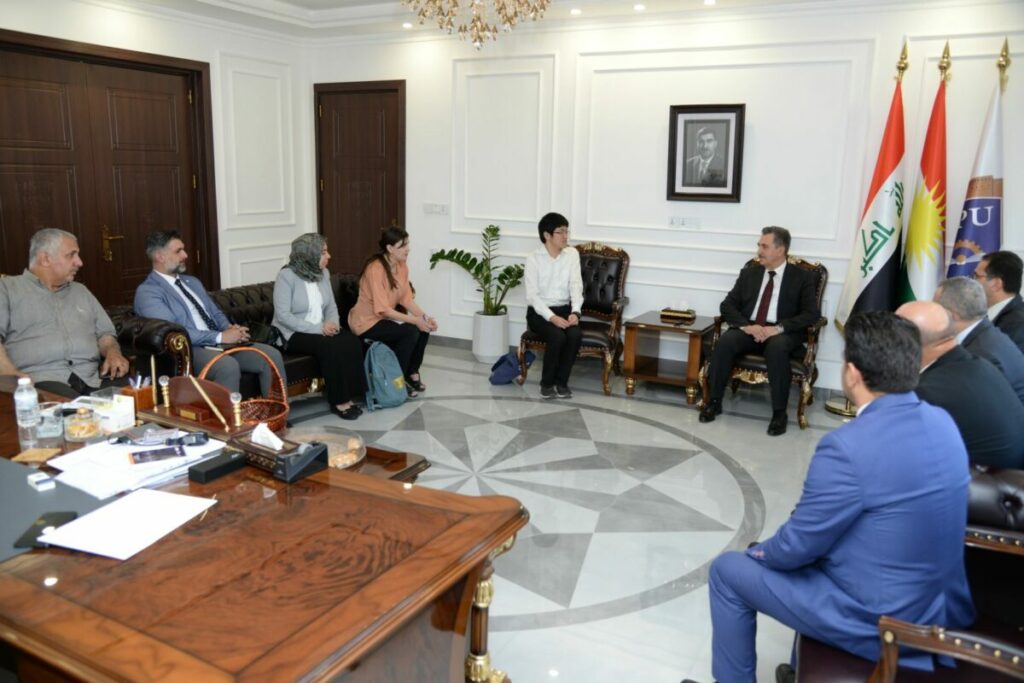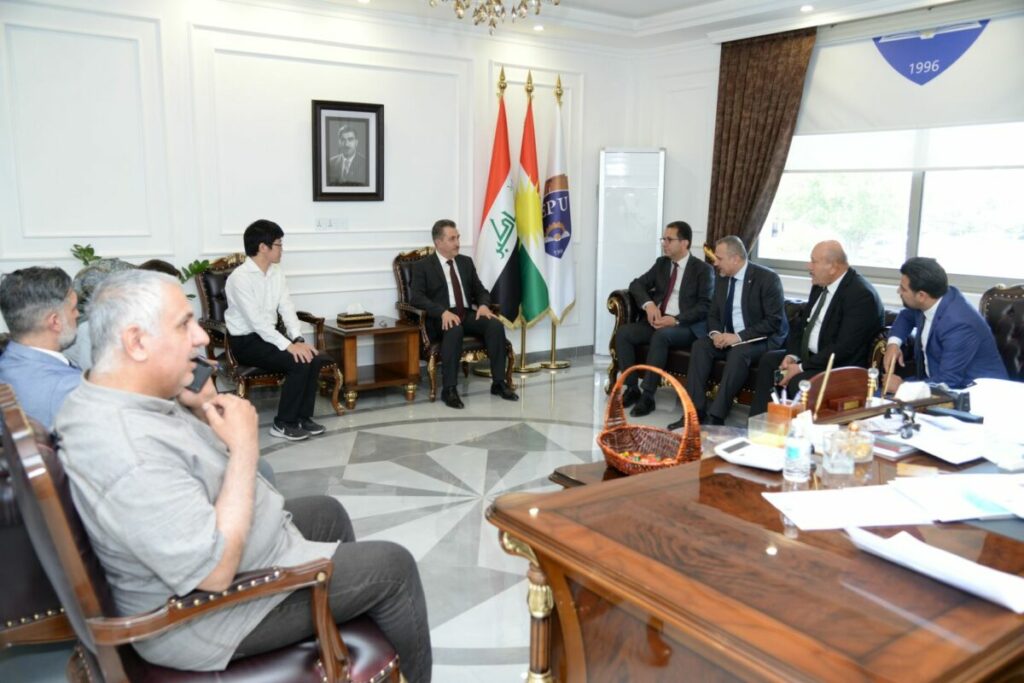On Wednesday, the 3rd of May, 2023, in the presence of the Rector of the University, Prof. Dr. Edrees Muhamad Tahir Harki, a number of presidents of Kurdistan universities, the General Director of the Divan of the Ministry of Higher Education,the Ministry of Higher Education and Scientific Research Consultants, a parliament member, the Vice Rectors, teachers and researchers of the Erbil Polytechnic University the international journal introduction ceremony was held.
At the beginning of the ceremony, the Rector of the University, Prof. Dr. Edrees Muhamad Tahir Harki welcomed the guests and explained the importance of this strategic and unique step. His Excellency said: “today, we are pleased to celebrate with you the launch of the Polytechnic Journal, which is registered on the platform of (Elsevier Digital Commons).
Ladies and Gentlemen, if we look at the universities of the world in general in recent years, they made many changes in the university system of higher education as we see that these universities follow a culture of internationalization, and those universities that have moved towards internationalization are far ahead of those that have not been able to internationalize their universities.
In fact, the internationalization of a regional or local university requires a radical and permanent change in the philosophy, direction and strategy of the university. So, the university leadership should use this philosophy. We as the Erbil Polytechnic University have continuously worked on internationalization of the university in many areas. If you want to internationalize a university, you must work with all institutions in the university and programs and conduct scientific research jointly with other universities.
At the Erbil Polytechnic University, we aim to step forward to enable researchers of our university and universities in Erbil and Kurdistan Region in general to be able to do their research internationally, because we have master’s and doctoral students It is a very good thing to do. Because of being evaluated in a local journal and locally have been read it may not be very visible. For this reason, we thought it is necessary to take this initiative and register the Polytechnic Journal on the Elsevier platform to make it easier for our researchers to internationalize their research.
We hope that we can work on how to make our university international in the future. I welcome you again and we hope that this journal open be a new gate for all teachers and researchers of Kurdistan universities.”
Then the Vice Rector for Scientific Affairs and Higher Education, Asst. Prof. Dr. Nageb Toma Bato briefed the audience on the history of the Polytechnic Magazine and explained the details and working methods in the past and present, as well as the stages that the magazine has passed through.
Later, Asst. Prof. Dr. Karwan Wasman and Dr. Rawaz Ahmad Kurda jointly discussed the registration and implementation of the journal’s work in the platform and how to publish research and registration of researchers were explained.
Then His Excellency the University Rector Prof. Dr. Edrees Muhamad Tahir Harki awarded the researchers with a free of charge publishing of their research in this journal.
